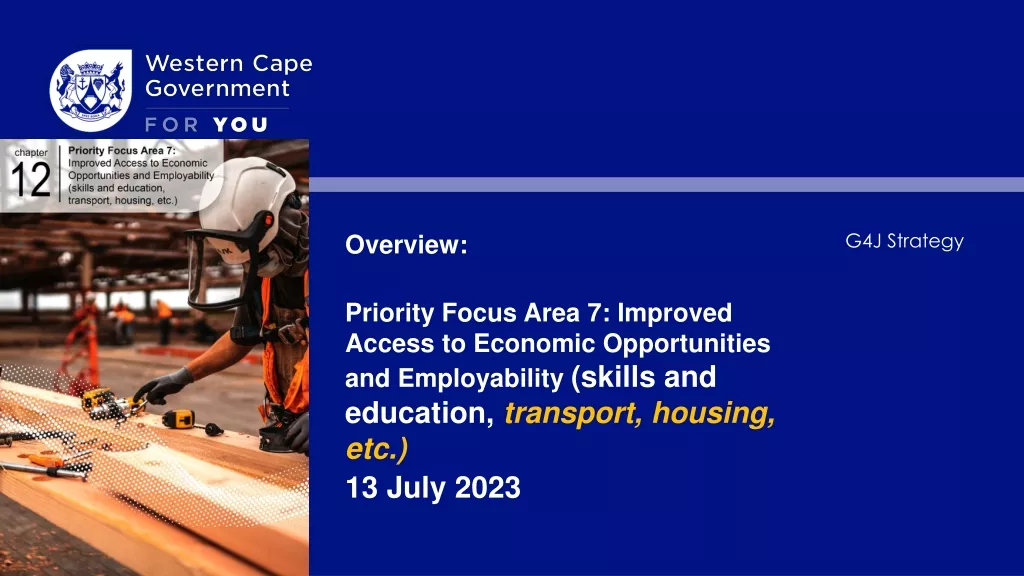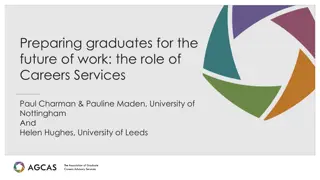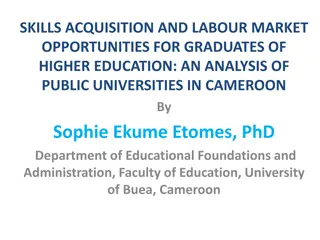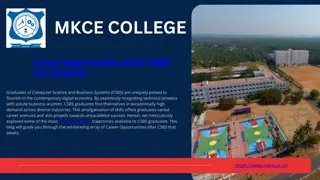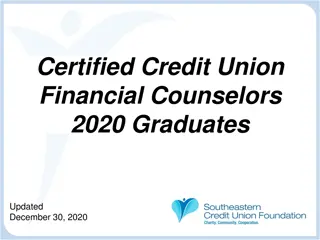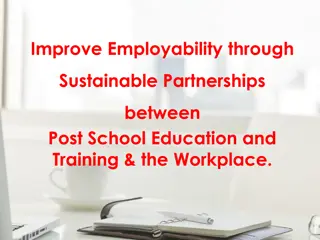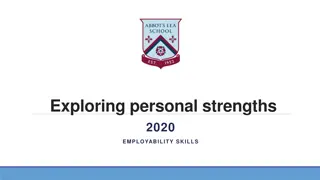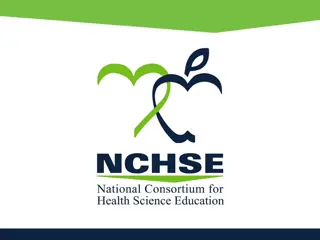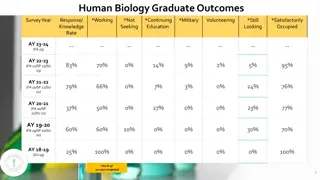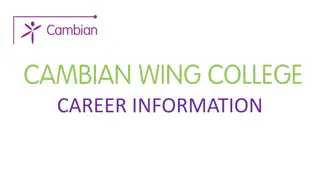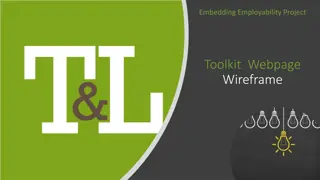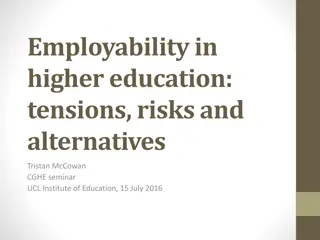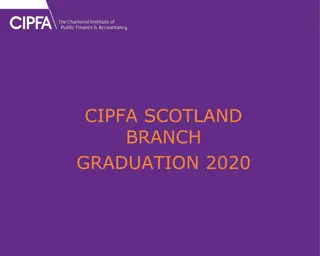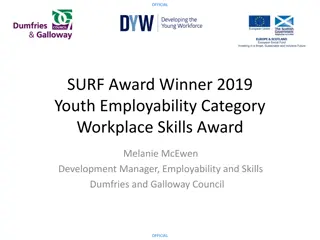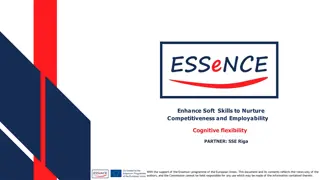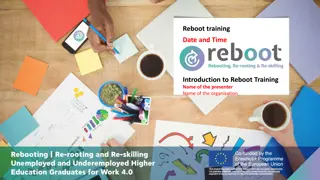Enhancing Employability Skills in Graduates
This presentation explores the challenges faced by new graduates in meeting employer expectations and government standards for employability. It delves into strategies such as utilizing the STAR formula, developing customized teaching materials, and testing employability skills mastery over time. The study aims to address gaps in students' skills and competencies and support them in articulating their abilities effectively.
Download Presentation

Please find below an Image/Link to download the presentation.
The content on the website is provided AS IS for your information and personal use only. It may not be sold, licensed, or shared on other websites without obtaining consent from the author.If you encounter any issues during the download, it is possible that the publisher has removed the file from their server.
You are allowed to download the files provided on this website for personal or commercial use, subject to the condition that they are used lawfully. All files are the property of their respective owners.
The content on the website is provided AS IS for your information and personal use only. It may not be sold, licensed, or shared on other websites without obtaining consent from the author.
E N D
Presentation Transcript
A Addressing Employer ddressing Employer and Government Calls and Government Calls for Employability for Employability- -skilled Graduates Graduates skilled 10/11/2018 Jill Tomasson Goodwin, Department of Communication Arts Joslin Goh, Statistical Consulting and Collaborative Research Unit Katherine Lithgow, Centre for Teaching Excellence
Presentation outline 1 employer and government calls and study response 2 study goals 3 study design and findings 4 implications for universities 5 learning outcomes and assessment materials Educating for the Future Symposium: Tomasson Goodwin, Goh, Lithgow PAGE 2
1. Employer calls Only 1 in 5 employers or 20% -- believe that new graduates have the skills necessary to fill entry level positions in their companies. CareerBuilder.ca, 2015 Competencies Can Bridge the Interests of Business and Universities Drummond et al, 2015 Educating for the Future Symposium: Tomasson Goodwin, Goh, Lithgow PAGE 3
Study response to employer calls Globally, STAR (Situation-Task-Action-Result) most commonly-used employment interview formula Students identify and articulate their employability skills following the STAR formula Educating for the Future Symposium: Tomasson Goodwin, Goh, Lithgow PAGE 4
Government call As of 2017, the government of Ontario expects universities and colleges to close gaps in students skills and competencies Educating for the Future Symposium: Tomasson Goodwin, Goh, Lithgow PAGE 5
Study response to government call Designed customized teaching and learning materials that support students to recognize, value, and articulate employability skills Educating for the Future Symposium: Tomasson Goodwin, Goh, Lithgow PAGE 6
2. Study goals 1to support students understanding and articulation of their employability skills through customized learning materials 2to test students employability skills articulation and mastery over time through a post-course survey Educating for the Future Symposium: Tomasson Goodwin, Goh, Lithgow PAGE 7
3. Study Design To assess articulation skills retention over time, a six- month, post-term survey was sent to participants Size: ~3400 students in 44 courses Scope: in all academic years, from studio (25) to large lecture (350+ students) Transdisciplinary: from all University faculties Program Designation: in co-op and non co-op Educating for the Future Symposium: Tomasson Goodwin, Goh, Lithgow PAGE 8
Data Analysis of STAR articulation Students articulated their employability skills by identifying a Situation or Task in which they used the skill, measured as Sharpen providing details of the Actions they took that demonstrated the skill, measured as Deepen connecting the Results of the situation to future situations, measured as Transfer Educating for the Future Symposium: Tomasson Goodwin, Goh, Lithgow PAGE 9
Study Finding 1 Students ability to articulate employability skills Is not affected by their program (co-op non co-op) 89% 87% 81% 76% 76% 72% Sharpen Deepen Transfer Co-op Non co-op Educating for the Future Symposium: Tomasson Goodwin, Goh, Lithgow PAGE 10
Study Finding 2 Students ability to articulate employability skills Is not affected by their year of study 92% 82% 79% 79% 73% 70% Sharpen Deepen Transfer Lower-level Upper-level Educating for the Future Symposium: Tomasson Goodwin, Goh, Lithgow PAGE 11
Study Finding 3 Students ability to articulate employability skills Is affected by their enrolment in courses that required STAR-reflection assignments 93% 89% 81% 68% 51% 27% Sharpen Deepen Transfer Control Experimental Educating for the Future Symposium: Tomasson Goodwin, Goh, Lithgow PAGE 12
4. Implications for universities These findings suggest that universities should integrate institution-wide, course-level employability skills articulation assignments for all students in all years of study in all programs, co-op and non co-op Educating for the Future Symposium: Tomasson Goodwin, Goh, Lithgow PAGE 13
5. Study resources: learning outcomes and assessment resources Creative commons-licenced teaching and learning materials available from our study website Educating for the Future Symposium: Tomasson Goodwin, Goh, Lithgow PAGE 14
Learning outcomes 1 Instructors highlight course-embedded employability skills in syllabus See Example Syllabi Educating for the Future Symposium: Tomasson Goodwin, Goh, Lithgow PAGE 15
Learning outcomes 2 Instructors tailor course assignments to teach students to articulate the employability skills tied to their coursework See Example Syllabi Educating for the Future Symposium: Tomasson Goodwin, Goh, Lithgow PAGE 16
Learning outcomes 3 Students write reflections that followed the employer- standard STAR (situation-task-action-result) formula Educating for the Future Symposium: Tomasson Goodwin, Goh, Lithgow PAGE 17
Assessment: eP STAR articulation rubric Instructors and students use a custom-designed interactive assessment rubric to enable instructor and peer feedback Educating for the Future Symposium: Tomasson Goodwin, Goh, Lithgow PAGE 18
References CareerBuilder. (2015). Majority of Companies Plan to Hire Recent College Graduates, According to CareerBuilder.ca Survey. Retrieved from https://www.careerbuilder.ca/ca/share/aboutus/pressreleasesdetail.aspx?sd=4 %2F23%2F2015&id=pr79&ed=12%2F31%2F2015 Drummond, Don and Ellen Kachuck Rosenbluth (2015). Competencies Can Bridge the Interests of Business and Universities, Education Policy Research Initiative Working Paper, uOttawa. Ontario Ministry of Advanced Education and Skills Development (2016). Building A Workforce of Tomorrow: A Shared Responsibility. Tomasson Goodwin, Jill, Joslin Goh, Stephanie Verkoeyen and Katherine Lithgow (2018). Can students be taught to articulate employability skills? Manuscript in preparation. Educating for the Future Symposium: Tomasson Goodwin, Goh, Lithgow PAGE 19
Resources: https://uwaterloo.ca/centre-for-teaching- excellence/support/integrative-learning/watcv jtomasso@uwaterloo.ca | jtcgoh@uwaterloo.ca | klithgow@uwaterloo.ca PAGE 20
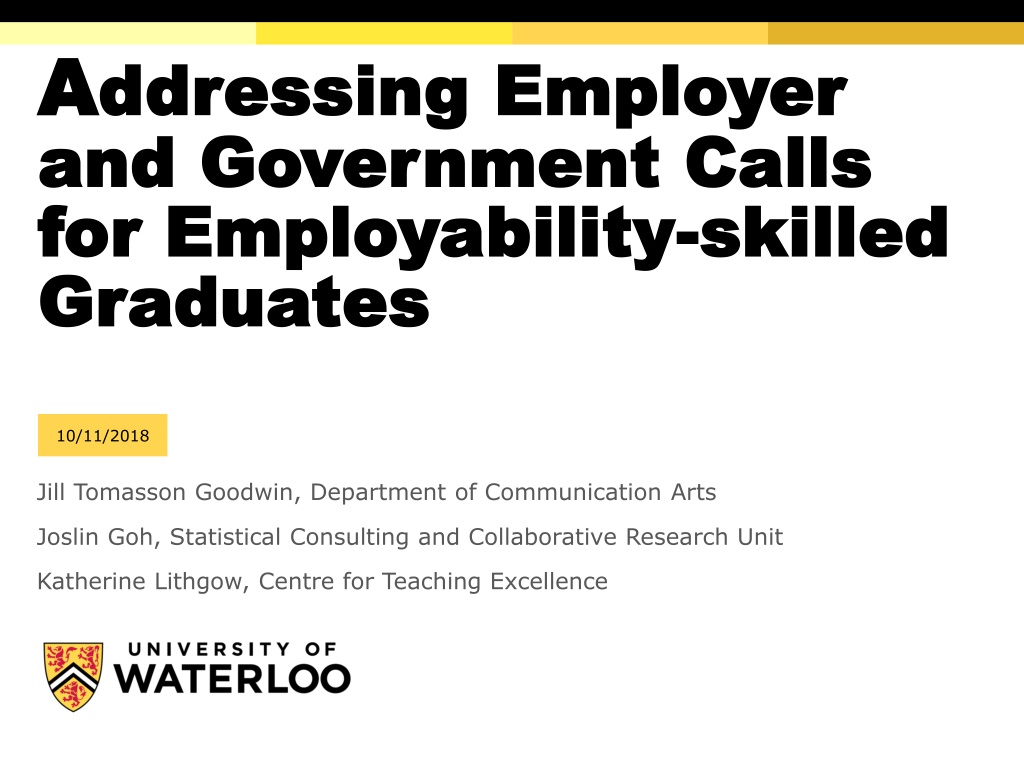
 undefined
undefined




